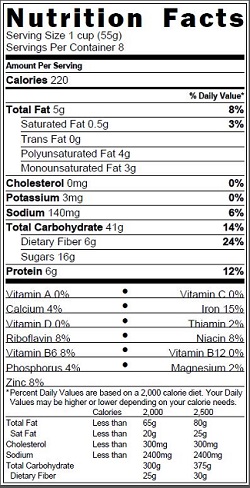Choosing the Right Cereal
As a renal dietitian, I am often asked what types of breakfast cereals are part of a kidney-friendly diet. This can be a difficult question to answer. First of all, there is an entire aisle at most grocery stores dedicated to cereal! With hundreds of options, choosing the right one can be an overwhelming task for anyone. And even more difficult for individuals following a specific diet.
Secondly, I like to think about the individual person (lab results, food preferences, etc.). Today’s kidney diet is customized for each person’s needs. Working with a renal dietitian will ensure you are receiving the most up to date information and more importantly, a kidney diet specific for you.
Today’s Kidney Diet
The kidney diet of today is very different than the kidney diet five years ago. Current research1 tells us that expanding the kidney diet to include a wider variety of healthy foods can not only improve the quality of life for individuals with kidney disease, but also improve their feelings towards the diet. Whole foods are now included on an individual basis with the help of a renal dietitian. Therefore, for cereal choices, whole grain cereal options are often recommended and encouraged.
Below are some ideas to get you thinking about how to navigate through the cereal aisle. 
How Much Sodium?
- Take a look at the nutrition facts label.
- Choose cereals lowest in sodium. It is listed as mg per serving and % Daily Value (2,400 mg per day of sodium). Keep in mind 5% DV or less of sodium in considered low. 20% DV or more per serving is considered high.
How Much Phosphorus?
- Check the label!
- Shoot for 100 mg or less of phosphorus per serving (or listed as 10% of the daily value).
- This can get tricky as phosphorus in whole foods (such as oatmeal or bran cereals) is higher, however, our body is only going to absorb 40 to 60% of it! When the phosphorus is added to the product in the form of phosphate additives (check the ingredient list- more info on this topic here) our body will absorb 90 to100%.
Okay, so now you have a general idea of what to look for…
Label Reading Practice
Would it be helpful to practice how this might go in the cereal aisle?
Below is an example of a cereal Nutrition Facts Label you may come across in the grocery store. Before reading on, what do you notice? How much sodium? How much phosphorus?

Let’s look at phosphorus. In one serving (1 cup) of this cereal, there is 4% of the Daily Value (DV) of phosphorus. Remember that the recommended Daily Value is 1000 mg of phosphorus so you would be consuming 40 mg in 1 cup. Although there is no ingredient list, lets assume there are no phosphorus additives listed. Therefore, all of the phosphorus is naturally occurring and our body will only absorb 16-24 mg of phosphorus.
Unfortunately, you will not always see phosphorus listed in the Nutrition Facts  Label because it’s not required by law. So looking for those additives in the ingredients list becomes even more important!
Label because it’s not required by law. So looking for those additives in the ingredients list becomes even more important!
Cereal Options
Here is a list of kidney-friendly cereal choices and a DaVita Eats video to show you how easy it is to make a nutritious hot cereal, Quick and Easy Apple Oatmeal Custard.
- Special K® Original cereal
- Special K Protein® cereal
- Crispy rice cereal
- Wheat, corn or rice flakes, “Chex” or puffed cereals (tend to be lower in phosphorus and sodium)
- Cran-Apple Oatmeal Plus Egg
- Cream of Wheat®
- Cream of Rice
- Grits
- Multigrain Hot Cereal
- Oatmeal
For more on cereal read the past kidney diet tips post “Best cereal choices for the kidney diet“.
In conclusion, it is not easy to make healthy decisions, right?!?!?! We have so many options to choose from and so much information at our fingertips it can be difficult to sift through it all. Utilizing diet and nutrition tools on Davita.com or your renal dietitian can help you make the best food decisions for you.
Reference
1. Biruete, et al. “Modified Nutritional Recommendations to Improve Dietary Patterns and Outcomes in Hemodialysis Patients” JREN Vol 27:1, 62-70 January 2017.
Additional Kidney Diet Resources
Visit DaVita.com and explore these diet and nutrition resources:
DaVita Kidney-Friendly Recipes
This article is for informational purposes only and is not a substitute for medical advice or treatment. Consult your physician and dietitian regarding your specific diagnosis, treatment, diet and health questions.

Recent Comments